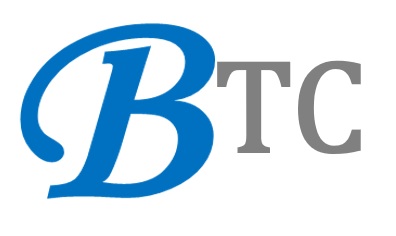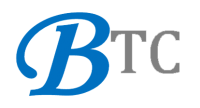
Nonverbal communication in the workplace is extremely important. Whether you’re trying to sell a car, pitch a project to your boss, or nail a job interview, what you convey beyond words can determine the difference between success and failure. This makes communication in the age of Covid-19 more challenging for the obvious reason that masks, a necessary component of fighting the pandemic, hide the parts of our faces that display facial expressions — particularly those micro-expressions that we use without thinking to convey as well as perceive sincerity, trustworthiness, and good intentions.
In situations where there’s an incongruity between what’s spoken verbally and what’s displayed nonverbally, people instinctively lend greater weight to the latter. Unfortunately, if your expressions are concealed by a mask, that can happen more often. A case in point is a 2013 study which found that when doctors wore face masks during consultations, patients had more negative perceptions of them.
Of course, from a public health perspective, wearing masks is a must in the midst of this pandemic, and we mustn’t stop doing so just because they present certain challenges. Here, then, are some tips for how to communicate effectively and build rapport while still doing your part to keep everyone safe.
Avoid Clear Masks Unless Necessary
Clear masks may seem like a good solution, but some people find them unsettling, and they also tend to fog up. A situation when it may still be worth using clear masks is when the person you’re speaking to is deaf or when you’re addressing an audience that may include deaf individuals. Otherwise, it’s usually best to stick with regular, non-clear masks and compensate for the covering up of your micro expressions by using the other suggestions provided here.
Practice Your “Mask Voice”
The quality of your voice makes a big difference in how people respond emotionally to what you say, and this is true in both personal and professional interactions. Even if we say the exact same things but in different tones, people will respond differently. When we wear masks, our voices must play an even bigger role than usual. Fortunately, there are research-backed ways to make them more effective. I call it using our “mask voice,” and I use the acronym PAVE to help people remember four key elements: pause, accentuate, volume, and emotion.
- Pause: Normally, visual cues of the mouth help us to see when a speaker is pausing for a response. Since we can’t see that now, make a conscious effort to noticeably pause here and there to give people opportunities to jump in or respond. This also breaks up your message into digestible chunks.
- Accentuate: Avoid monotony by accentuating key phrases and information, but don’t always accentuate in the same way. Use different intonation.
- Volume: Masks have a slight muffling effect so speak up (but don’t shout, obviously).
- Emotion: Inappropriate moments, try to make your voice more expressive by conveying positive emotions like excitement, awe, gratitude, and sympathy. Do this in moderation since you don’t want to come across as if you’re performing Shakespeare.
Practice Active Listening
Now that you’ve adjusted your voice, you can also adjust the actual words you use. This starts with active listening. When your conversation partner is speaking, show interest by periodically nodding and making sounds of understanding like “Mm hmm.” If the speaker pauses but isn’t finished talking, you can again affirm understanding or interest with phrases like “I’m listening” or “And then what happened?” If the speaker expresses emotions, especially negative ones (e.g. frustration or disappointment), paraphrasing can be a powerful way to affirm their feelings. You can start with a phrase like “So do you mean…” or “What I hear you saying is…” and then say what you think they’re feeling with your own words instead of just parroting what they said. This kind of active listening and paraphrasing helps build rapport and increases your perceived likeability.
Use Gestures and Body Language
Let’s move on to body language. Try to make full use of gestures while speaking to convey meaning and emotion—a little more than usual wouldn’t hurt. Obviously, you don’t want to overdo it to the point where it distracts your audience or you look like a mime. A good rule of thumb would be to increase the level of your gesturing by about 10%.
Since we can’t shake hands, one gesture you should use often to build rapport is waving your hand when greeting people. The ritual of handshaking goes back centuries and served important psychological functions, for example, showing that you weren’t carrying any weapons and could therefore be trusted. While the reason for handshaking has evolved, the importance of it has not. A friendly, animated wave can go a long way towards conveying that same sense of goodwill.
Mirror Your Counterpart
Mirroring is a non-verbal behavior that involves imitating the body language of a person or group of people with whom you are interacting. A lot of mirroring happens naturally and unconsciously. Studies have shown that it helps build rapport between individuals, and the practice of doing it intentionally has become more popular for this reason. As with gesturing, however, you don’t want to overdo it to the point where it becomes noticeable or unnatural. In this case, less is more.
Keep the Two T’s Aligned
The “Two T’s” stands for the “toes and torso.” During interactions, your feet have a natural tendency to reveal what’s really going on in your mind. So if you’re in a meeting but are hungry, your toes might start pointing in the direction of the door. This can be subconsciously interpreted as a lack of interest so keep your toes and torso aligned and facing the person or people with whom you’re interacting. Side note: if you notice the other person’s toes facing away from you, you definitely don’t want to mirror them.
Smile with Your Eyes
Smiling is an extremely important form of nonverbal communication in business as well as in socializing. Research shows that smiles with eyes that look angry, fearful, sad, or neutral are perceived as not happy and, therefore, not indicative of the friendliness we associate with happy smiles. When we’re wearing masks it is therefore even more important to “smile with your eyes” — or “smize” as model Tyra Banks calls it — if you want to create positive feelings.
Simply put, when you smile there’s a wrinkling that occurs at the outer edges of your eyes. This happens more naturally and noticeably for some people than others, so I recommend intentionally wrinkling your eyes when you’re wearing your mask, even if it feels awkward at first. To get it right, practice in front of a mirror with your mask on. As long as you’re actually smiling with your mouth when you do this, it should look natural.
Know When to Zoom
Generally speaking, in-person communication is preferable to video conference – even when you have to wear masks during the former and you don’t during the latter. With offices open or opening around the world, you’ll have to make more choices going forward. And there may still be situations in which Zoom or other tools make more sense, such as if you’re part of a high-risk group or living with someone who is, or if slides and graphics play a big role in your presentation.
Masks are here to stay for the foreseeable future. But the time and effort you put into internalizing these tips won’t just pay off during the pandemic. They’ll continue to help you communicate more effectively when we’re all able to show our full faces again.
This post is written: Dustin York, is an associate professor and the director of undergraduate and graduate communications at Maryville University
The original post link: https://hbr.org/2020/09/how-to-build-rapport-while-wearing-a-mask

